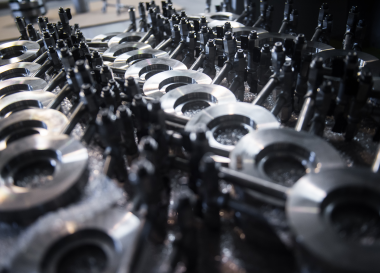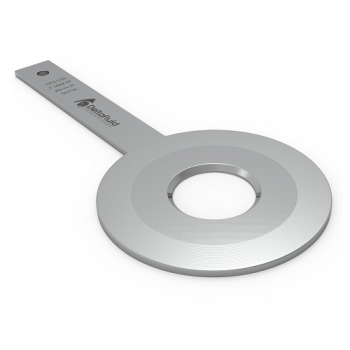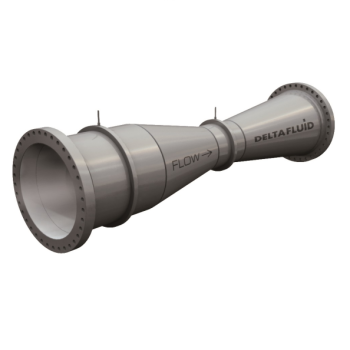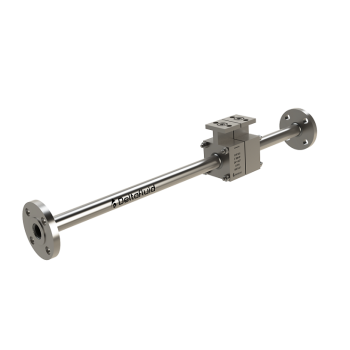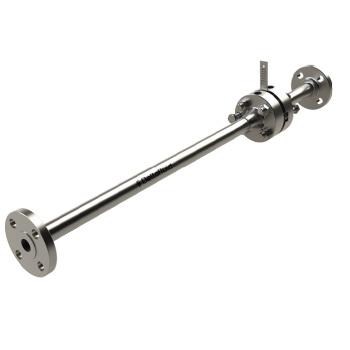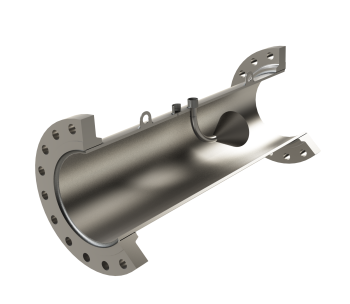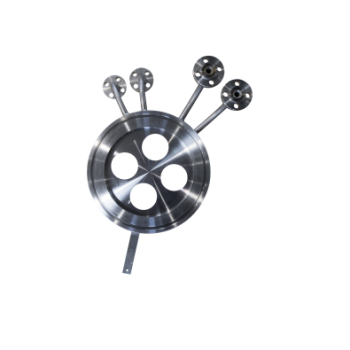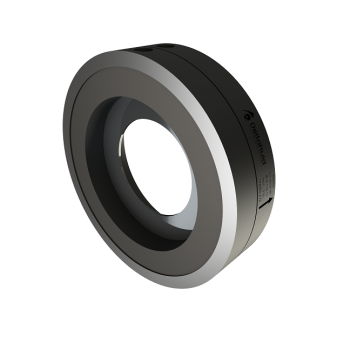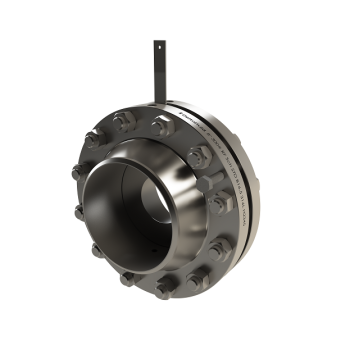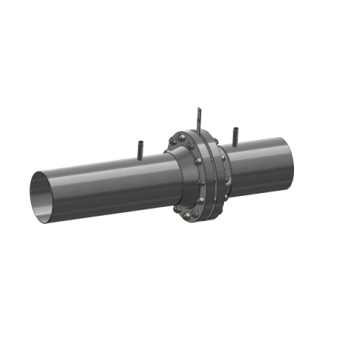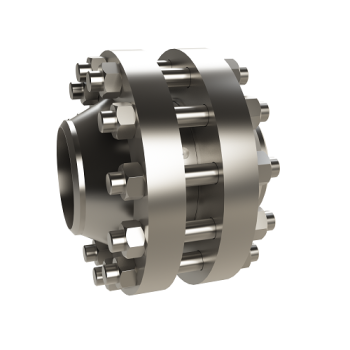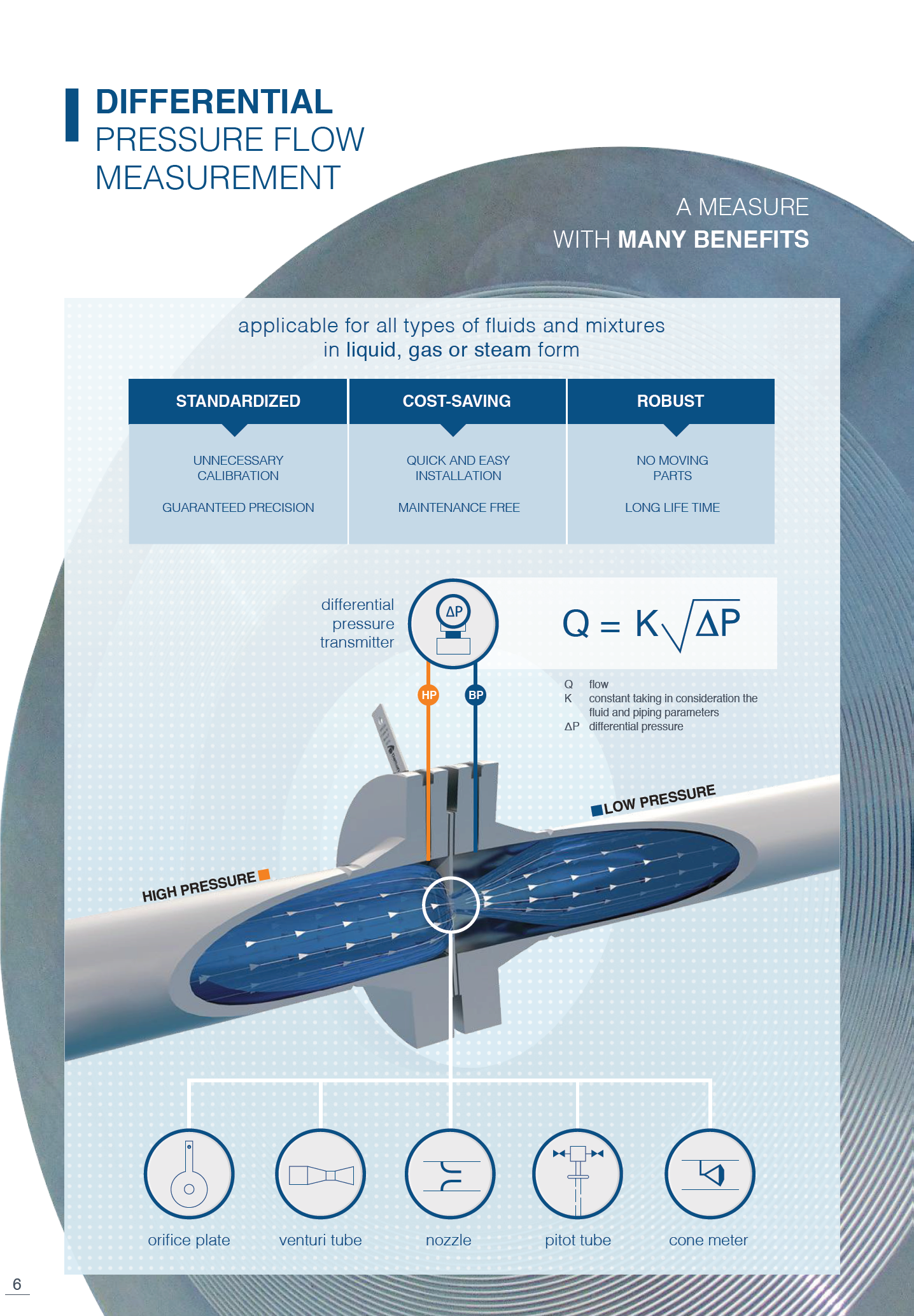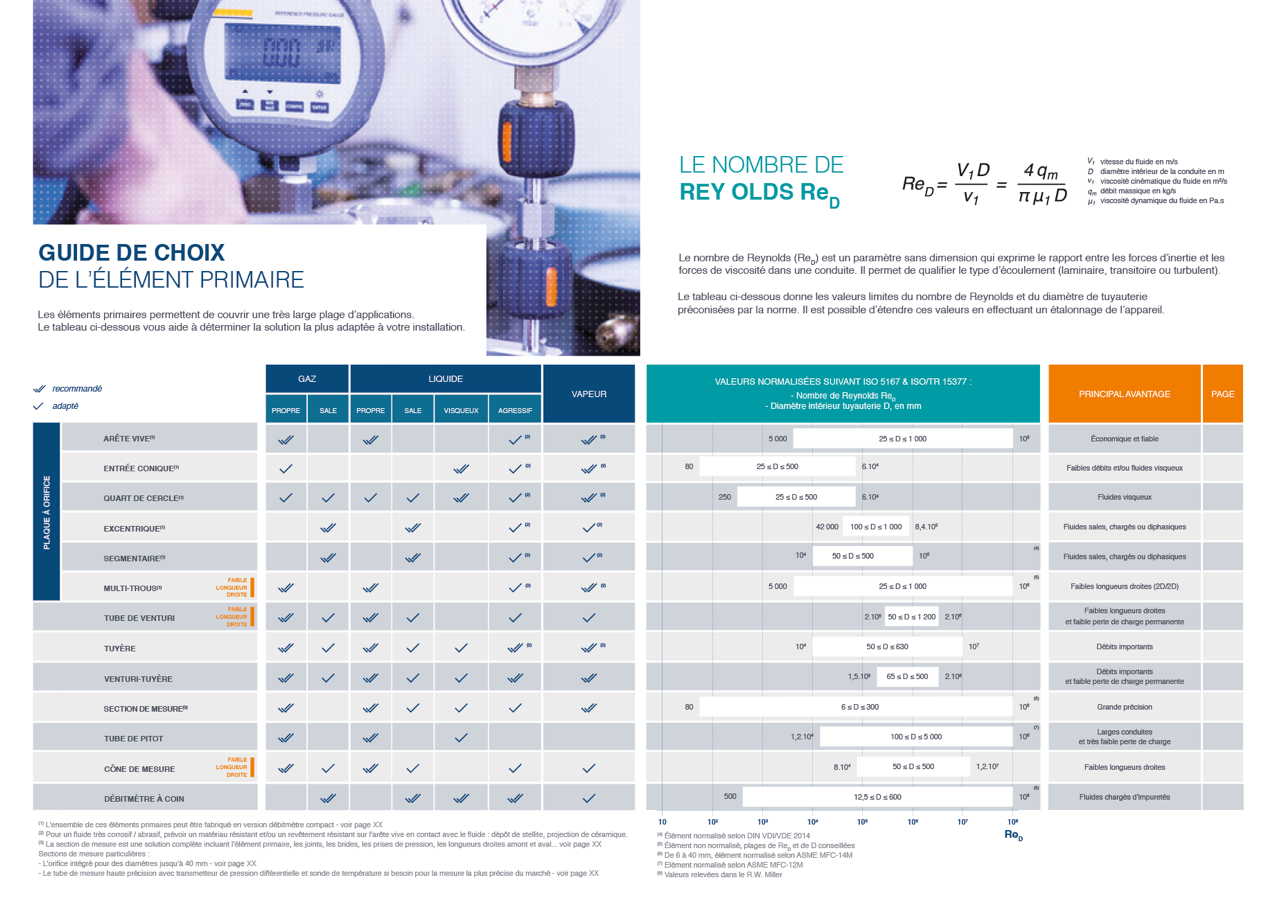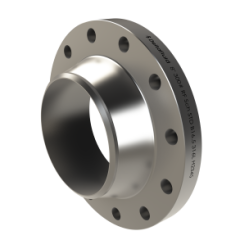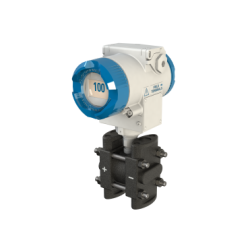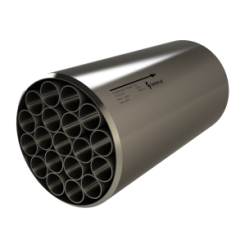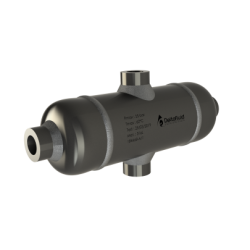Flow measurement
Differential pressure flowmeter
Differential pressure flow meters are standardized and proven flow meters.
Their calibration is thus superfluous and their accuracy guaranteed according to the standards in force (ISO 5167, ISO / TR 15377, ASME-MFC 3M ...). They have the advantage of being reliable, economical and robust. They can be used for all types of fluids in liquid, gas and vapor form.
Specific solutions can be proposed in order to ensure reduction of straight lengths (conditioning orifice plate), reduction of possible leak sources (compact flowmeter), increase of accuracy measurement (meter run), increase of turn-down ratio (double transmitter solution) or increase of orifice life time in presence of corrosive and agressive fluids (specific coating of the orifice).
They can also be concerned by the European Pressure Equipment Directive PED 2014/68/UE.
The principle of the differential pressure flow measurement is to insert in a circular pipe a restriction which generates a pressure difference between the upstream and the downstream of this restriction.
The measurement of this pressure difference (called ΔP) is transformed by a differential pressure sensor into a 4-20 mA signal and then translated into a flow rate according to the law:
Q being the flow
K a constant that takes into account the fluid parameters, the viscosity, the roughness of the pipework, the density of the fluid, etc.
Δp the differential pressure (upstream pressure - downstream pressure).
For more details on the differential pressure (called ΔP) measured between the upstream and the downstream of the measurement element, see the explanation on the illustrated diagram.
This table is a tool to help select the primary element of flow measurement. Depending on the type and characteristics of the medium to be measured, you can get a first idea of the specific flowmeter for your application.
Attention, it's a first approach; it is then imperative to validate the choice by a calculation made by our specialized design office.
For the calculation, we need information about your process.
If you do not find the answer you are looking for, please contact us either by phone at +33 (0)5.59.30.85.20 or via the contact form. We will respond as soon as possible.
Differential pressure flow meters are the oldest flow meters. The first scientific studies date from the beginning of the 17th century. In industry, the first standardized devices such as orifice plates appeared at the beginning of the twentieth century in the oil industry in the United States. Since then, this type of measurement has evolved considerably: other devices such as venturis, nozzles, pitot tubes, cones meters, wedge meters have been developed and offer a wide range to suit all industrial applications. All devices are standardized (the latest, the wedge flowmeter integrated in the ISO5167 standard in February 2019). On one hand, they offer a guarantee of precision in compliance with the calculation and installation criteria defined in the standard. On the other hand, they are economical devices to purchase and maintain and are very robust.
Standardized technology means that these flow measuring devices are designed and manufactured according to the standards in force (ISO 5167, ISO / TR 15377, ASME-MFC 3M ...). Thus, accuracy is guaranteed (provided that the installation of the device in the measuring section also complies with the standard) and no calibration of the device is necessary neither for the commissionning nor during the entire service life of the device. You will find, in the page of each product, the current standards and the corresponding characteristics.
We have defined a selection table that will allow you to choose according to the characteristics of your application. To consult it, please refer to the Selection tab on this page.
In addition, specific solutions can be proposed to ensure reduction of straight lengths (with the multi-hole orifice plate), reduction of possible leak sources (with the compact flowmeter), increase of measurement accuracy (with a high precision measurement tube), increase of the turn-down ratio (solution with double transmitter) or increase of the orifice life time in presence of corrosive / agressvie fluids (specific coating of the orifice).
The flow measurement primary elements (orifice plate, venturi ...) are generally to be mounted between flanges with seals (or to be welded). Depending on your installation, tubing will be required for the pressure taps, isolation valves, manifold and differential pressure transmitter. For steam applications, condensation pots are also required before the transmitter. Here you will find more detailed information about the accessories.
The annular chamber has several advantages. First, it offers the possibility to change only the plate in case of maintenance or change of process compared to a monoblock where the complete system must be changed. Moreover, it allows the circulation of the fluid over the complete circumference of the pipework and thus offers a more stable and more precise averaged pressure. This type of mounting is particularly recommended for pipe diameters smaller than DN50.
Non Destructive Testing (NDT) checks the integrity and health of a material or part without damaging it. They are used to highlight surface defects such as cracks, holes, pits ... or internal defects such as porosities, blisters, inclusions, non-emergent cracks, thickness variations due to wear or tear, corrosion ... Complementary controls also allow to check the chemical nature of the materials used and the mechanical strength of the parts.
The main control techniques used are:
- Visual inspection (or Visual Testing - VT)
- Penetrant Testing (PT)
- Radiography (or Radiographic Testing - RT)
- Ultrasonic testing (UT)
- Leak Tightness Testing (LT)
- PMI / Ferrite rate
- Hydraulic test
100% of the parts manufactured by Deltafluid go through a dimensional inspection. Depending on the product to be tested, we can also use a roughness meter, a profilometer to check all of its technical data.
Finally, for specific applications, we can:
- have our equipment calibrated in an approved laboratory (COFRAC, ISO 17025 ...)
- authorize customer inspections or independent third-party inspections
To know more, visit our NDT page.
The rangeability also called turndown ratio corresponds to the measurement range between the maximum flow and the minimum flow rate in which the measurement will be performed while maintaining a very high level of precision.
The turn down ratio of the flow measurement by means of a pressure differential element is around 1:6, which means that the flow measurement is carried out accurately from 16 to 100% of the max flow rate. However, it is possible to propose an extended rangeability of up to 1:42 corresponding to a measurement of 2 to 100% of the maximum flow with good accuracy. The solution is to place two or three pressure transmitters in parallel so that each one can take care of a part of the measuring range.
You can consult this document for more information.
Please contact us for more details on this application.
The last version of the ISO5167-1 standard illustrates this very clearly.
In a differential pressure flow measurement element, the differential pressure is measured between the upstream pressure tap (high pressure) and the downstream pressure tap (low pressure) at a standardized distance of the measurement element. This value is used for the flow calculation.
The permanent pressure loss also called unrecoverable pressure loss is caused by the insertion of a restriction into a pipe: the pressure downstream of the restriction is lower that the one upstream. This value is used for the design of restriction orifices as pressure reduction.
The diagram here clearly explains the difference between these two values:
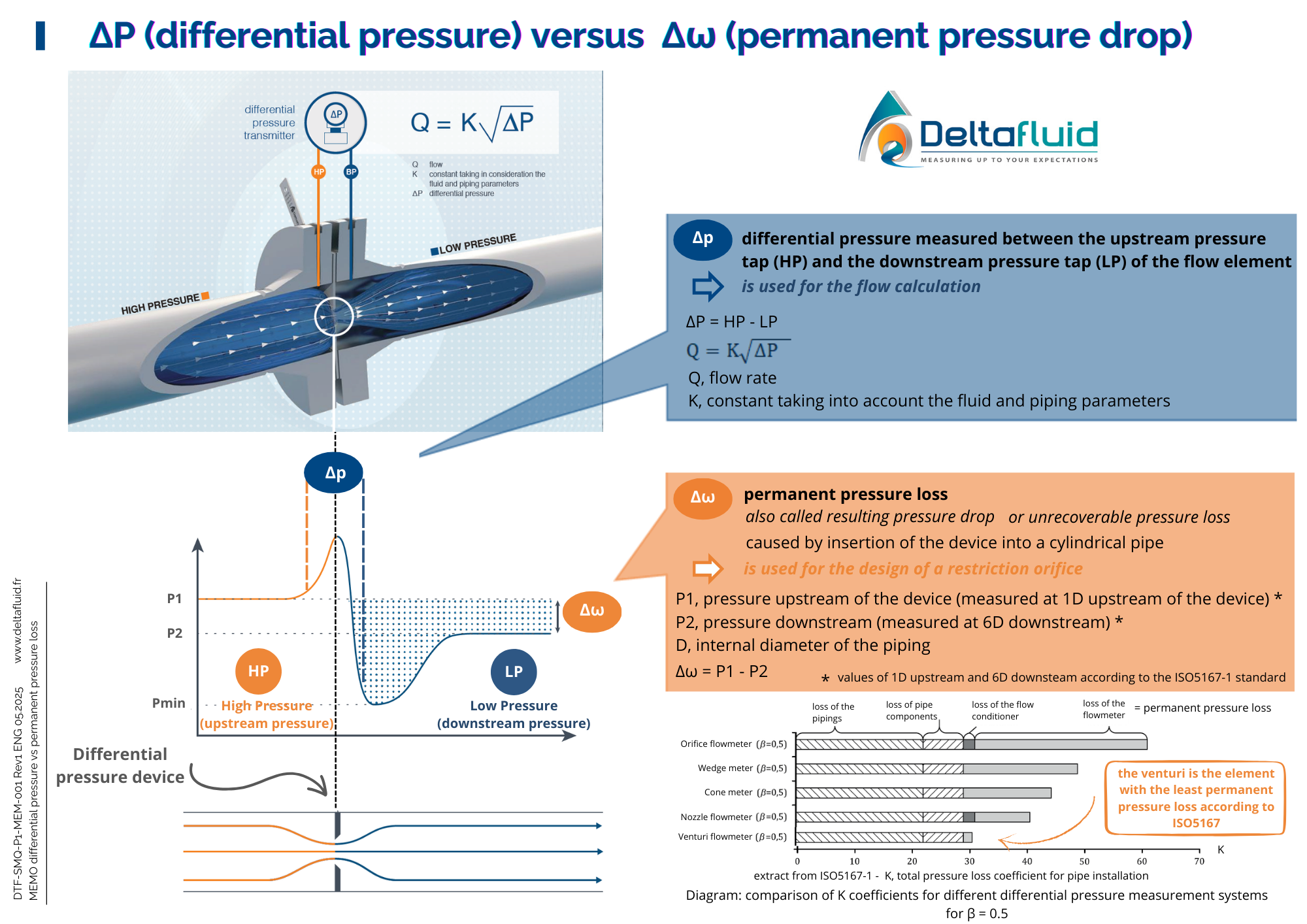
It can be downloaded here.
